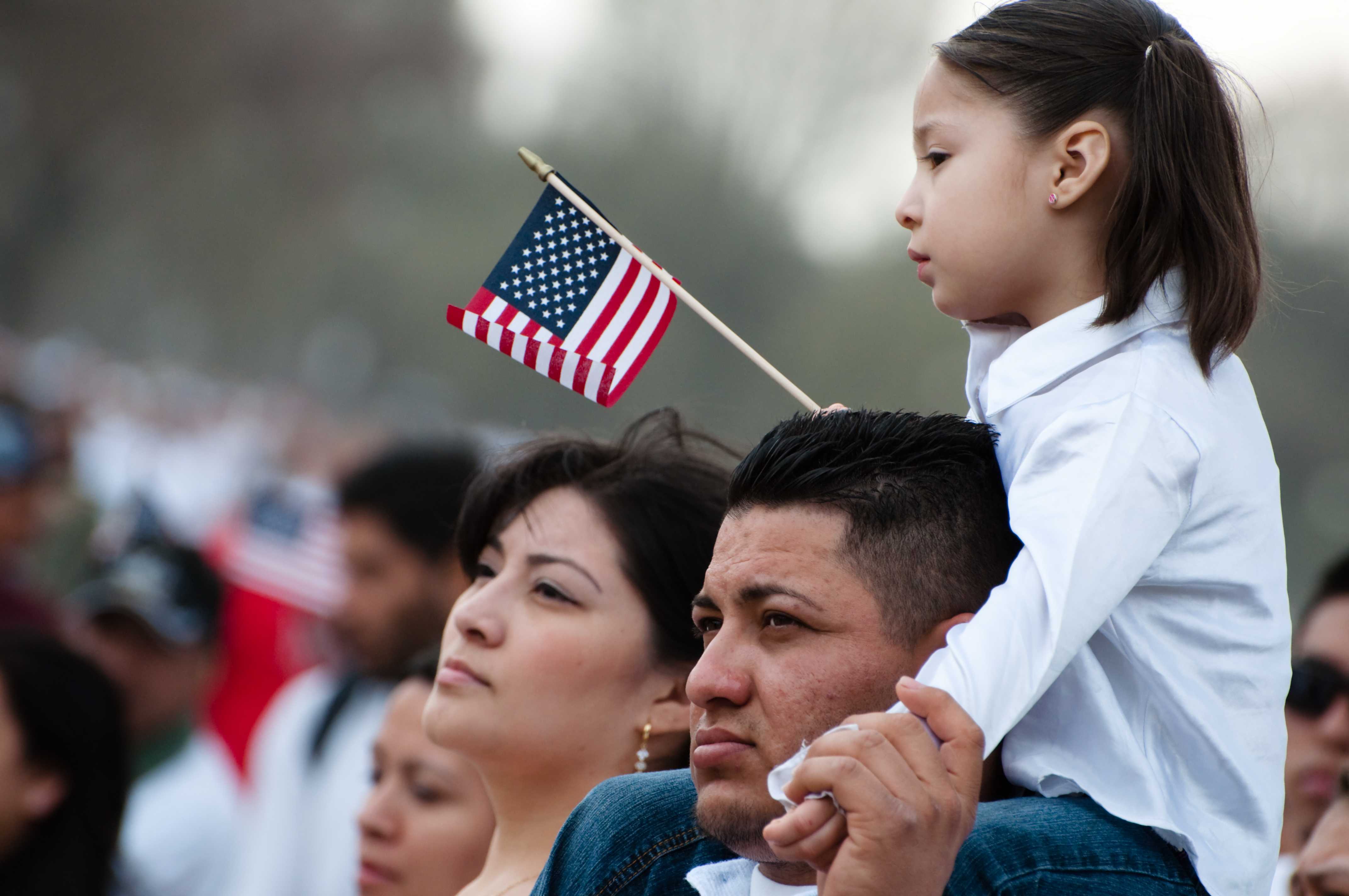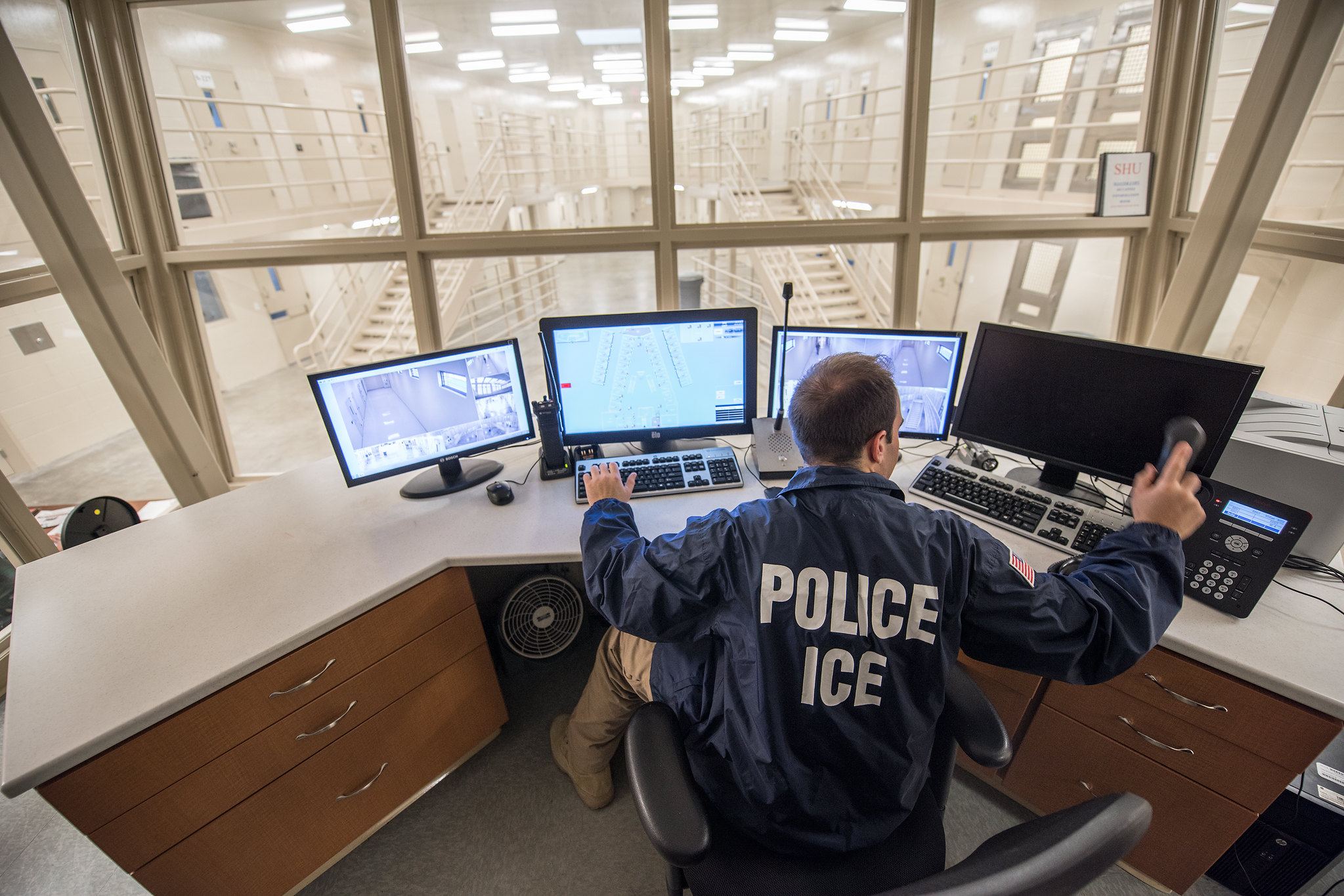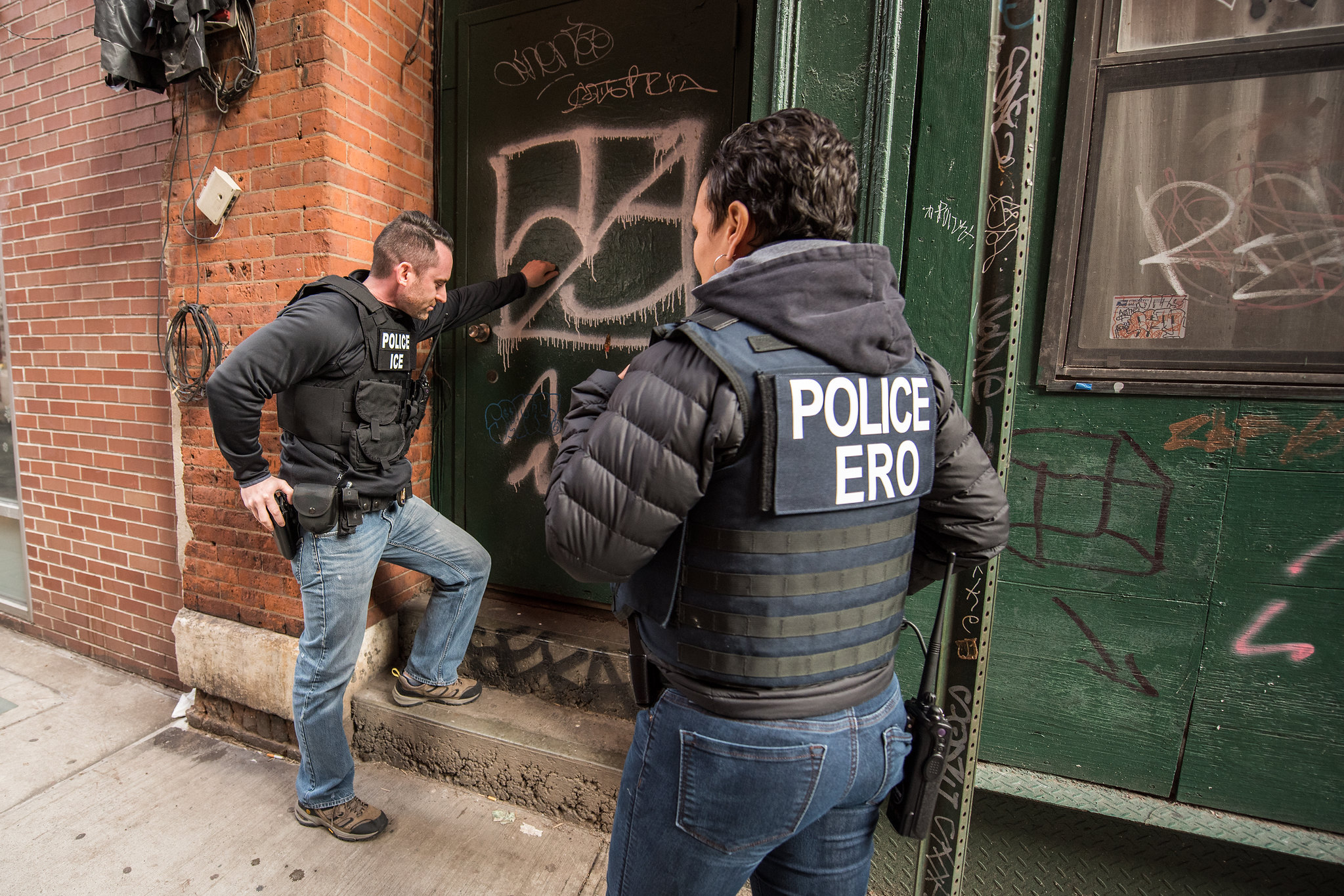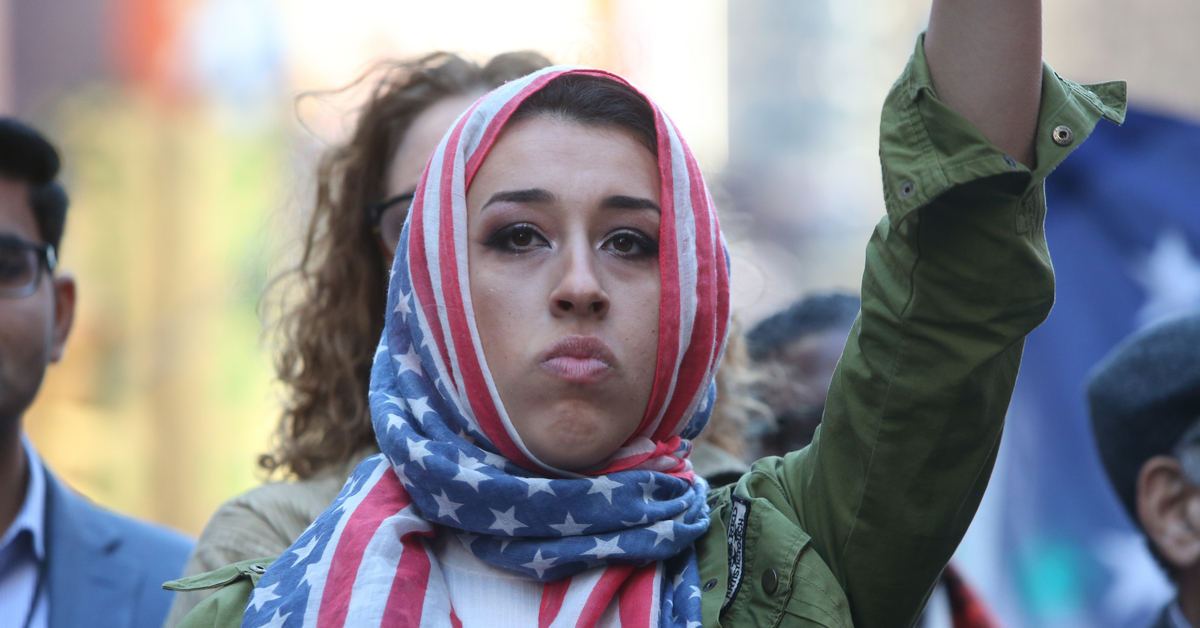In front of the Simón Bolívar statue at the bustling intersection of 6th Avenue and 59th street, surrounded by the towering skyscrapers and trees of Central Park, Diana V., 26, poses while her husband of seven years, Ricardo C., 28, snaps photos to share on Facebook and tag the location. The comments from their family and friends back home pour in instantly, many wondering how they are able to afford visiting such an iconic park. Those comments, Ricardo said, made him ponder why people thought that they needed money to enjoy a walk in the park.
In the nearby Watson Hotel, Lu Reaño, an asylum seeker from Peru, makes her way towards the train station, heading to La Parada in Brooklyn, where migrant women day laborers gather. She passes by a truck selling halal food, huddled over by a family of tourists. She sees one of them hand the food seller a note, along with some dollar bills as a tip. She sees the seller smile, thanking the family as they walk and blend into the crowd. Seeing that interaction fills Reaño with gratitude, she said. “It was beautiful.”
Across the Verrazano Bridge, Diana Fajardo, 40, and her husband make their way to a Christian church in the Manor Heights neighborhood of Staten Island to join volunteers at a food pantry. Locals begin to line up outside the church, waiting their turn to enter and take one of the bags home — just like Fajardo did 6 months ago, when she was residing at a family shelter in the area. But, after using the assistance herself, she now wants to give back to the community that took her in.
Also Read: One Year in NYC and Migrants Still Fighting to Leave Shelters
More than 81,000 asylum seekers have arrived in New York City since last spring, settling in all five boroughs. While migrants still face challenges living in the city shelters, some asylum seekers, like Ricardo, Diana, Reaño, and Fajardo — who said they had escaped violence and discrimination in their countries — told Documented that their lives have improved since arriving in the city. They added that they are grateful for a new start and have made efforts to give back to the community that welcomed them. Some have been able to secure jobs, enroll their children in schools, and work towards independence as they wait for their immigration cases to play out in court.
Finding free things to do
Similar to the stories of other migrants Documented reported last year, Ricardo and Diana — who requested Documented only use their first names because they have ongoing immigration cases — traversed the Darién Gap jungle into Panama last October, and made their way up Central America to cross the U.S.-Mexican border. During the month-long odyssey, they said they saw people die; they witnessed extortions; and, at one point, Ricardo said he had the barrel of a revolver placed on the front of his head when they were kidnapped in Mexico — the same day that they were supposed to present themselves to the U.S. Customs and Border Patrol officers to seek asylum.
“It is like a movie that we will never forget,” Ricardo said, as he sat with his wife inside the El Budare Cafe, a restaurant that serves Venezuelan food near the shelter in Queens where they have been staying since December.
Originally, the two wanted to try their luck in Houston, Texas, but they found it difficult to move around without a car. They made their way to New York City by buying bus tickets, and, once they got here, presented themselves at a family intake shelter in The Bronx. Two days after being assigned to a shelter in Queens, Ricardo strolled around his neighborhood in Elmhurst and landed a job at a deli that paid him around $700 a week for more than 60 hours of work as a butcher.
Even though he felt it was long hours for little pay, he took the job. A month later he went to work at a convenience store that paid a better hourly wage.
Ricardo was happy to have found work, he said, but almost every dollar he made was allocated to pay off the loan he and his wife had taken to migrate, to cover their immigration legal representation, and to buy basic necessities.
Ricardo said he did not want his life to be consumed by work, nor did he want to wait to be better financially situated for he and his wife to start enjoying their new life in New York City. He said he wanted to fit into his new city because it was giving him opportunities that he did not have in his hometown of Maracay, an hour from Caracas. So he began looking for free activities to do during the weekend.
That’s how Ricardo and Diana ended up in front of the Simón Bolívar statue in December, when they had decided to take the subway to visit Central Park for the first time. It is a memory, Diana beams, that brings them joy because they had never imagined being in New York City. They remember buying their first hot dog, thinking that it would be delicious, only to be disappointed by its lack of flavor. “If it’s in Central Park, I assumed it would be good,” Ricardo said, laughing.
In the past six months they have visited the park multiple times, invited Diana’s sister and her husband to join them on a weekend stroll, and saw Cleopatra’s needle. They have walked among tourists across the Brooklyn Bridge, taken photos in front of the Unisphere globe at Flushing Park, and watched the Hudson River at Chelsea Piers.
“You do not always need money to have a good time,” Ricardo said, adding that every week they are looking for new things to do for free.
Their end goal, they said, is to depend less on New York City, though they are very grateful for the shelter that it has provided them. “I know there is a bad perception about Venezuelans,” he said, referring to negative comments he sees on social media, “but I want people to realize that we survived a dictatorship for more than 30 years. We overcame poverty and we want to succeed; we do not want to rely on city assistance forever.”
The two are hoping to save enough to rent an apartment before winter arrives, they said.
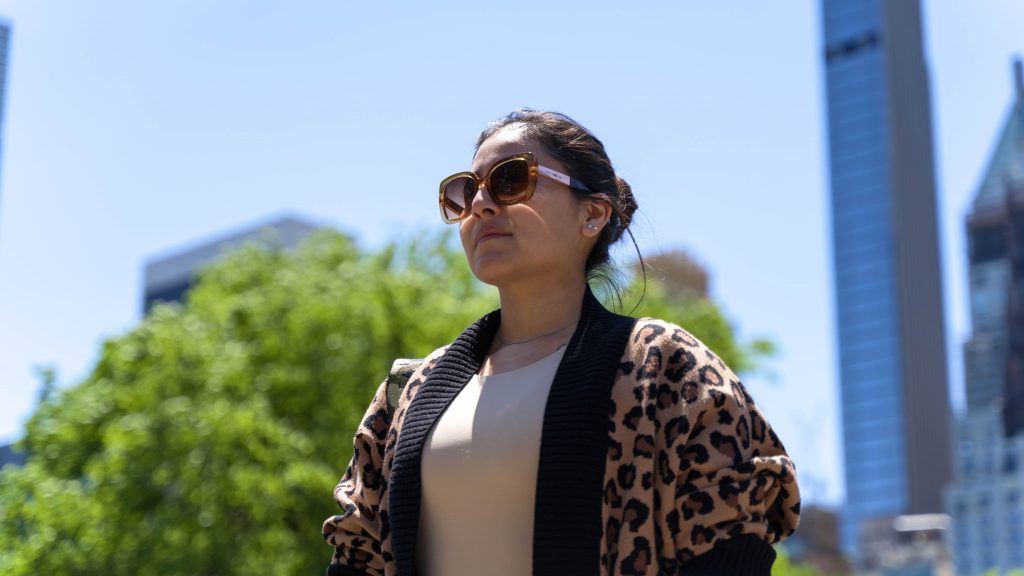
Noticing small acts of kindness
Lu Reaño, 30, boarded the C train towards her hotel and sat in a seat at the end of the car. In the next station, a man entered and sat in front of her. She remembers his surprised eyes gazing at her before asking if his smell bothered her. She smiled at him and told him that she didn’t mind. The man, who she believed was homeless, didn’t respond for a couple of seconds, but continued to stare. He asked her if she had a problem with him sitting across from her. “I reassured him that I did not,” she said.
The man took an apple out of his bag, and offered it to Reaño, but she declined it politely, before smiling and exiting the train two stops later. “I am also considered homeless, I am also depending on the city for shelter. It was beautiful to see someone offer me the little they had,” she said.
Small daily interactions in the subway, walks around 7th Avenue, and crowded parks are what make Reaño feel more at home in New York City, she said.
When Reaño arrived in the city in February, it marked a new start for her and her 13-year-old daughter, who both fled domestic violence in Peru, she said.
“My mom’s husband was supposed to house me in Virgina, but we had a disagreement so I made my way to New York City,” she said, adding that she stayed with her biological father for a few days in Queens, before he told her that she needed to find her own means of housing.
Without anyone to take her and her daughter in, they went to the intake shelter in The Bronx. She was assigned to the Watson Hotel in Manhattan within hours. The first night at the hotel, she said, was the first night in a while that the two were able to have a moment of peace and privacy. “The water is so warm,” her daughter told her after she showered.
Reaño’s mother in Peru has been trying to visit her in New York City, but Reaño discouraged her because the hotel does not allow any outside visitors. Reaño said she will try to find more work during the summer so that she can pay for a hotel for her mother to stay in during a winter visit to the city.
Despite the financial challenges, Reaño said she has been trying her best to live in the moment while also learning English and waiting to begin her case in immigration court. She likes keeping a positive attitude, she said.
Reaño said that sometimes being in New York City still feels like a dream. She is mesmerized by how on the same block she can see people from Latin America, Asia, and Europe. “Sometimes I stop in the middle of the street and realize how lucky I am to be surrounded by so many people from different countries.”
Reaño’s daughter enrolled in a school near Midtown, a ten minute walk from the hotel. She has made new friends, and her English has improved. It makes the journey to the states worth it, Reaño said.
Also Read: Migrant Children Face Trauma, Homelessness As They Seek Asylum in NYC
While her daughter is in school, she looks for work as a day laborer, but the gigs are inconsistent.
“We have to work with what we have,” Reaño said.
Giving back to the community that took her in
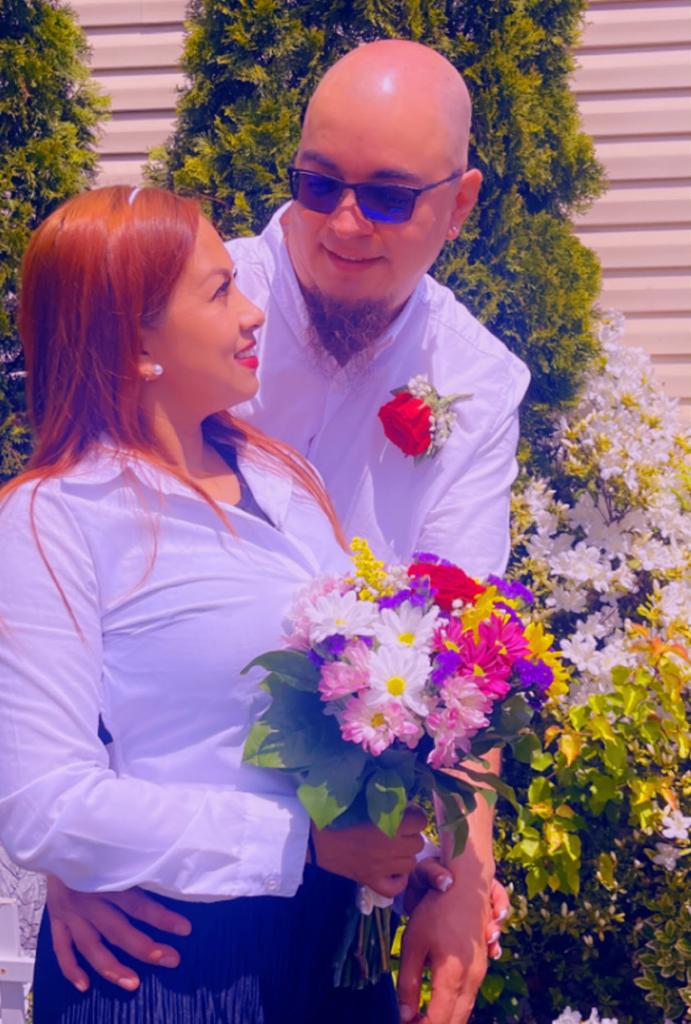
Last summer, Diana Fajardo made her first trip to a food pantry at a church near Manor Heights on Staten Island to line up and take a bag of food to her shelter. She did not have any money to buy groceries, and had just arrived in the United States from Bogota, Colombia with her three children — ages 8, 15, and 22 — and her husband.
The city’s Department of Homeless Services assigned four of them to a shelter on Staten Island, but her 22-year-old daughter could not stay with them because she’s an adult. Fajardo was devastated.
“What we don’t pay with money, we pay with tears,” she said, explaining the six months when the daughter had to stay with a friend in Brooklyn. Because the city’s shelters do not allow outside visitors, Fajardo met with her daughter in places near the shelter.
Despite being separated, the experience at the shelter was a positive one, Fajardo said. They obtained mental health services and information to enroll the kids in public school. The shelter also organized frequent activities, like soccer games, and that made it easier for her children to distract themselves outside of school hours.
While her kids were in school, Fajardo would make her way to the church to attend mass. She wanted to be involved in her new community, and eventually, she became a member of the church. She celebrated her 25th wedding anniversary with her husband there. Now, she volunteers at the pantry.
“I appreciate all the help they gave me. But I also wanted to earn their help and give back to the community,” Fajardo said.
Receiving assistance from nonprofits and the city was new for Fajardo. She said that in her hometown of Bogota, she was a practicing psychologist, serving clients in rural communities hours away from where she lived. Now, the tables were turned and she felt uneasy being the one to receive services. So she decided to assist the church by volunteering.
Every Thursday from 9 a.m. to 2 p.m., Fajardo, along with her husband, volunteer at the church by helping with the food pantry. Her husband helps unload boxes of food from delivery trucks, while Fajardo begins to assemble pantry bags by filling them with fruits, vegetables, and canned goods.
But volunteering at the church isn’t the only way she spends her time. Using her experience as a psychologist, Fajardo has also been assisting mental health counselors at the Colombian Consulate in Manhattan, where she helps support groups for Colombians living in New York City.
While the biggest challenge for the Fajardo family has been obtaining a work permit, she said that the assistance she received at the shelter and from other nonprofits helped her family adjust while they found sporadic work. She said that the case manager at the shelter was very attentive and always checked in on the family, even after they left the shelter system.
“We were able to rent an apartment after six months through a real estate person. It was difficult, it took us a month to find one,” Fajardo said. But she said that the struggle was worth it as they are, once again, living together with their daughter and building their life on Staten Island.


